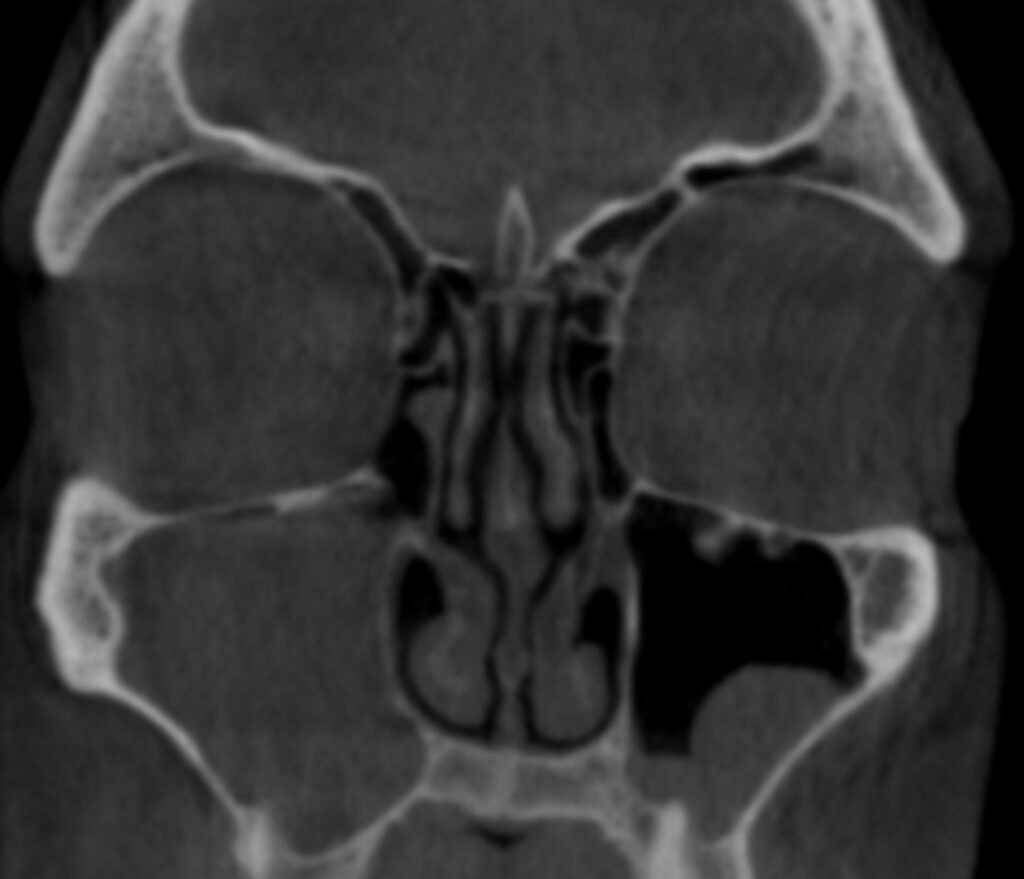Home >> Nose & Sinus > Chronic Sinus Infections
Chronic Sinus Infections
Frequent sinus infections can be very frustrating for the patient – causing headaches, fatigue, reduced productivity, missed work & school, disrupted sleeping and occasionally even leading to more serious infections that can land you in the hospital.

Your nose does a lot more than just giving you a sense of smell and creating a point of interest in the middle of your face. In addition to smell and letting us breathe with our mouths closed, the nose also filters the air that goes into our lungs. Dust, viruses, and bacteria are trapped in the mucus in the nasal cavities. That mucus then moves to the stomach where the germs can be killed by stomach acid.
The air we breathe is also warmed and moisturized as it travels through these passages so that when it gets to the lungs it is warm and saturated with water.
Sinuses are empty chambers inside the bones of your skull and face. They are usually filled with air and aid speech by resonating and vibrating.
You have four pairs of sinuses (maxillary, ethmoid, frontal and sphenoid), that are supposed to filled with air, each producing mucus that drains into the back of your throat and is swallowed. The draining action is helped along by tiny hair-like “cilia” that sweep the mucus through the sinuses. This drainage helps move the dust, bacteria, and viruses into the stomach as we mentioned above. Adults produce approximately 1 quart of mucous daily.

The job of the sinuses is to help the nose produce mucus to carry away dust particles, bacteria, viruses and other air pollutants that you breathe in.
When you get a cold, have an allergic reaction, or are bothered by some pollutant, your nose and sinuses produce extra mucus to try to wash away the problem. You may notice this extra mucus in the back of your throat (you probably don’t notice the normal mucus). It is called post nasal drip. When this mucus is green or yellow and thick and sticky, you may have sinusitis.
Sinusitis is an inflammation and infection of the sinuses. It occurs when the sinus openings are blocked and the mucus can’t drain properly. This creates a perfect environment for bacteria to grow. (Which is why you get that green or yellow mucus!) You may have a sinus headache that is felt in the face, cheeks, upper teeth, forehead, and around the eyes. You may also feel pressure in the sinuses. Other symptoms include a stuffy nose, runny nose, headaches, sneezing, post nasal drainage, facial pressure, sore throat (from the drainage going into the throat), plugged or painful ears, and a low grade fever or chills.
Sinusitis that occurs with a cold or other respiratory infection is considered “acute sinusitis.” Acute sinusitis symptoms will persist beyond the usual 7 days of a normal cold or flu.

When the sinuses are blocked for an extended period of time, chronic sinusitis may result. This form of sinusitis may be the result of allergies or chronic infection. Other problems like a nasal polyp, or a deviated septum can block the nasal passage and may also contribute to chronic sinusitis. In some cases, nasal polyps can also be caused by chronic sinus infections. These polyps are fleshy growths that protrude from the nasal membranes. With chronic sinusitis, you will often have less severe symptoms than with acute sinusitis, however, the symptoms usually don’t go away. The nasal congestion and drainage is typically worse in the morning, upon awakening.
Recurring Acute Sinusitis
A related condition is frequent relapses of acute sinusitis. These infections usually respond well to antibiotics but unfortunately seem to recur/relapse after a short period. When relatively simple infections keep recurring we are very diligent in searching for problems that lead to these infections. Immune deficiencies (such as IgA deficiency), osteomeatal narrowing (a subtle sinus obstruction), and nasal allergies are major contributors. Because these patients can usually temporarily clear a sinus infection with antibiotics, many patients will have a CT scan that has been interpreted as “normal” despite having relapses of classic symptoms (in this common case, the CT scan was probably scheduled immediately after a strong course of antibiotics, when we would expect the sinuses to look their best).
